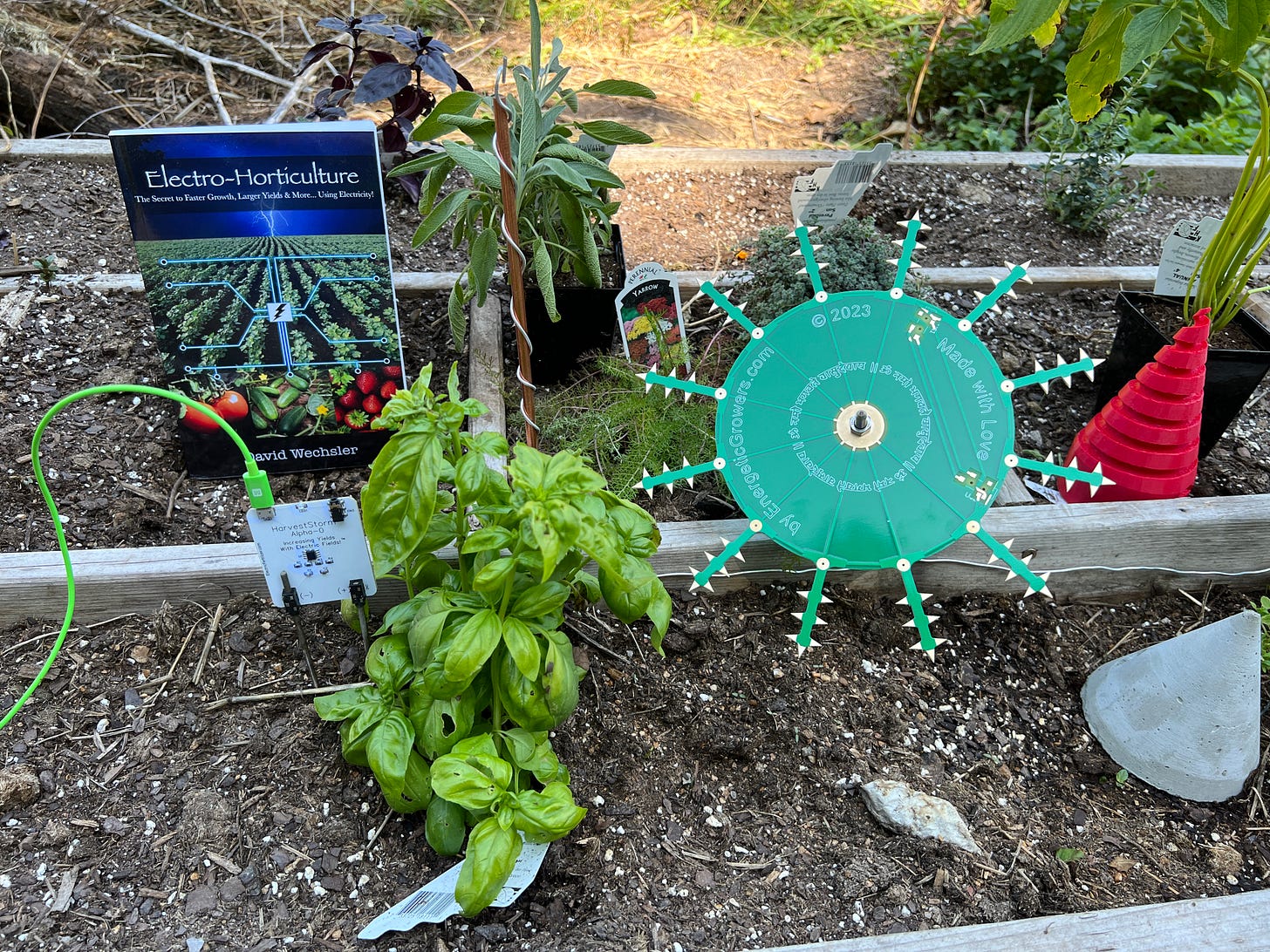Introduction to Electroculture
Welcome to the fascinating world of ⚡️electroculture gardening! 🌱
(This is a picture of some of the electroculture products that David produces)
This cutting-edge method harnesses the power of electricity to supercharge your plants, boosting their growth and resilience against disease. While still gaining recognition, electroculture is gaining popularity among gardeners and academics alike.
The idea behind electroculture gardening is simple yet ingenious: plants respond positively to electrical currents and fields. Research has shown that these currents can promote growth, enhance seed germination, and improve nutrient uptake efficiency, among many other incredible benefits, setting the stage for optimal plant development.
One of the biggest perks of electroculture gardening is its ability to increase yields and improve crop quality. By stimulating plant growth, you'll enjoy larger and healthier plants, leading to bountiful harvests of fruits, veggies, and more. Plus, the enhanced uptake of nutrients means your crops will be even more nutritious.
But that's not all! Electroculture gardening also reduces the need for fertilizers and chemicals, making it eco-friendly and sustainable. With just a few simple tools and a basic understanding of electrical principles, you can create a custom electroculture setup tailored to your plants' needs.
So how does it work? You can employ various techniques like low-voltage direct current (DC) stimulation, or high-voltage stimulation to expose your plants to electrical fields. The goal is to create an environment that promotes growth and development, all while carefully controlling factors like voltage, current, and frequency, if desired. Knowing the specific electrical needs of plants isn’t even necessary to get started.
While electroculture seems like a brand new method, it’s actually been around for thousands of years, used by ancient societies like the Aztecs and Maya, and countless other civilizations from the ancient world, using a variety of clever approaches that leverage the use of electromagnetic anomalies in the environment or naturally charged rocks or geographies.
Over the last 200 years or so, electroculture gardening has already shown promising results in research. From tomatoes to strawberries, this method has been proven to enhance productivity in a wide variety of crops.
Ready to give electroculture gardening a try? Start by doing your research, choosing your approach, and gathering your supplies. Start small, experiment, and monitor your results to fine-tune your technique. With a little curiosity and attention to detail, you'll be well on your way to reaping the rewards of this innovative gardening method. Happy gardening! 🌟





